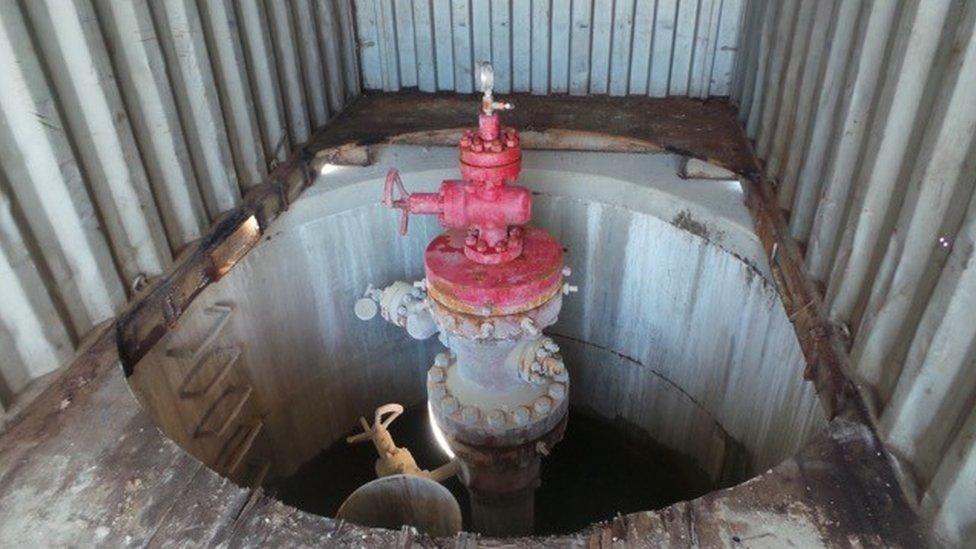New stations built in Surrey to record earthquakes
- Published
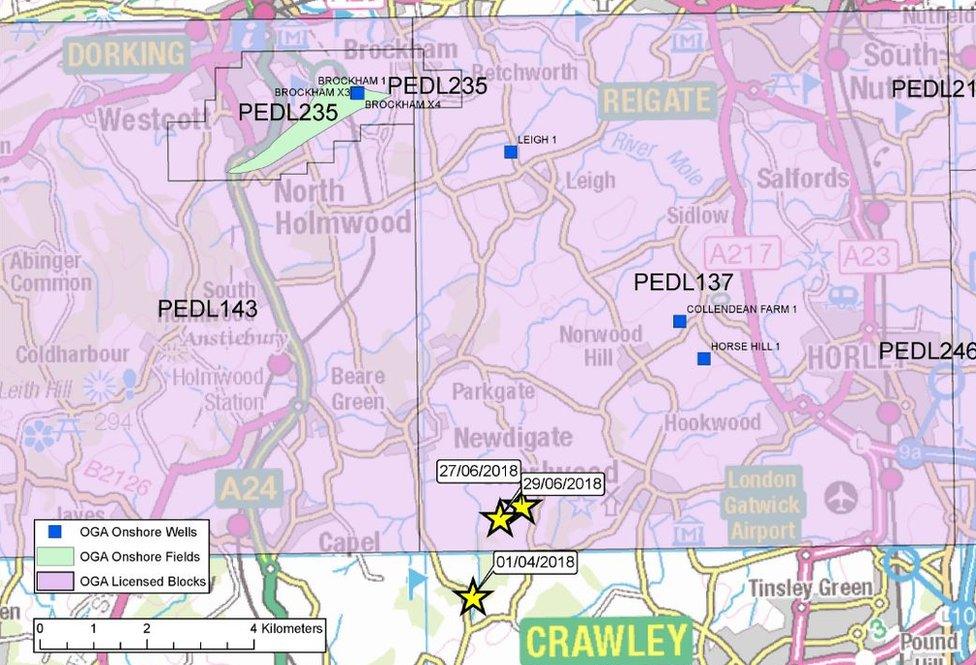
The yellow stars show the epicentres for the earthquakes in April and June
Two new seismic stations are being built in Surrey this week, to record the earth's movements in the wake of recent tremors.
Seven earthquakes were detected by the British Geological Survey (BGS) since April around Dorking and Crawley.
One on 5 July had a magnitude of 3.1 at Newdigate, near Gatwick Airport.
The BGS said it was aiming to better understand the cause of the quakes, by putting stations close the area of activity.
The work is expected to start later and be finished by the end of the week.
Allow X content?
This article contains content provided by X. We ask for your permission before anything is loaded, as they may be using cookies and other technologies. You may want to read X’s cookie policy, external and privacy policy, external before accepting. To view this content choose ‘accept and continue’.
BGS seismic network manager David Hawthorn, who is setting up the station, said: "There're like a microphone, continually recording sound.
"Our problem is, the nearest station to these earthquakes is over 50km, so the error bars are very large.
"We know there's been a quake, but we don't know how deep, or what might be causing it."
He confirmed there is evidence for historical earthquakes in the area in the last 500 years, though not so many in living memory, so natural causes for these earthquakes cannot be ruled out.
However test drilling and hydrocarbon exploration are also known to result in man-made or 'induced' earthquakes, and there is such a well nearby at Horse Hill.
The Oil and Gas Authority (OGA), the UK's regulatory body for oil and gas explorations and production, confirmed flow testing had not yet been carried out at the site, although it has been authorised and the equipment is there.
Once the stations are running, BGS analysts in Edinburgh will be able to use the data to better understand any future tremors.
- Published5 July 2018
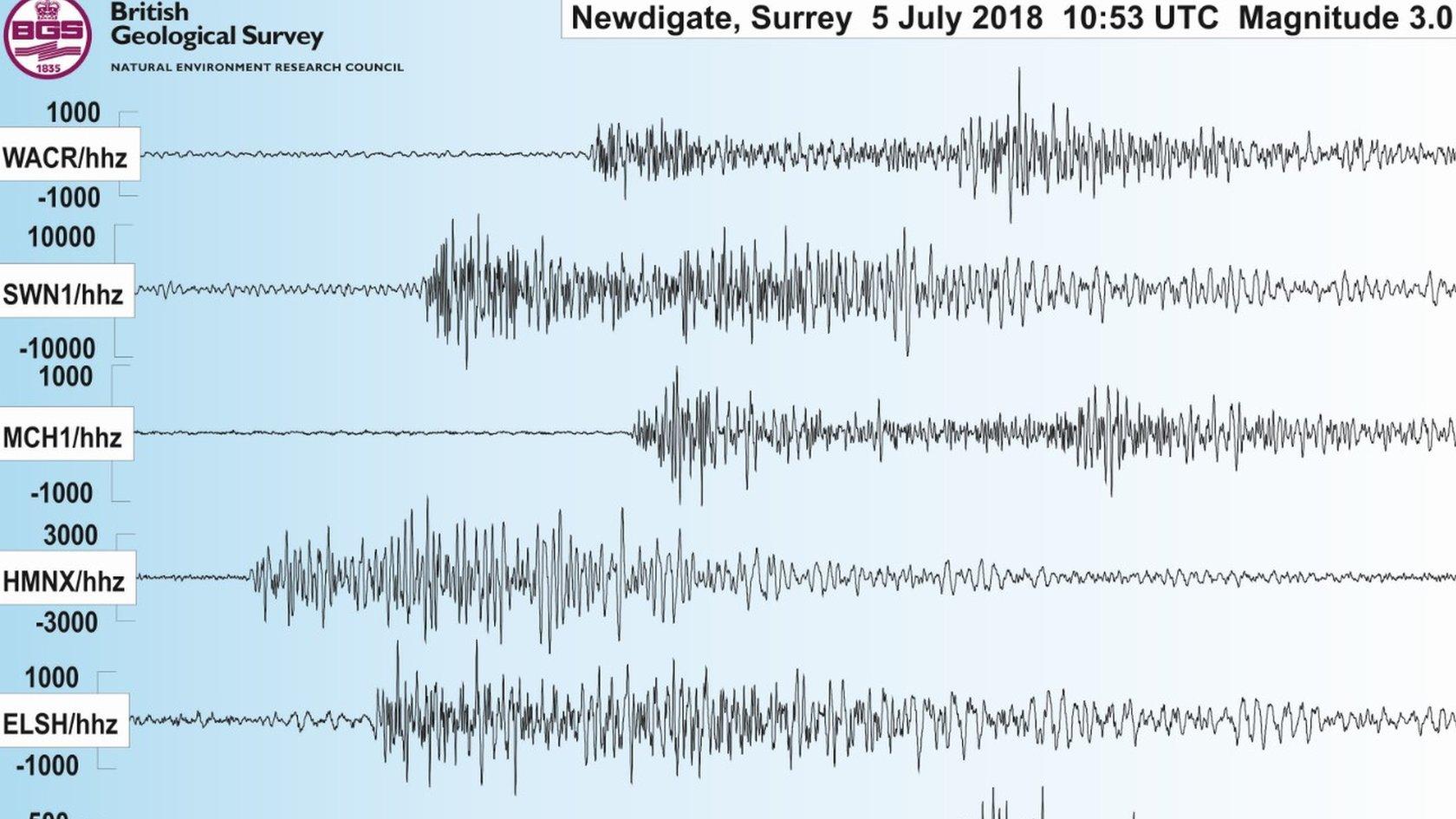
- Published29 June 2018
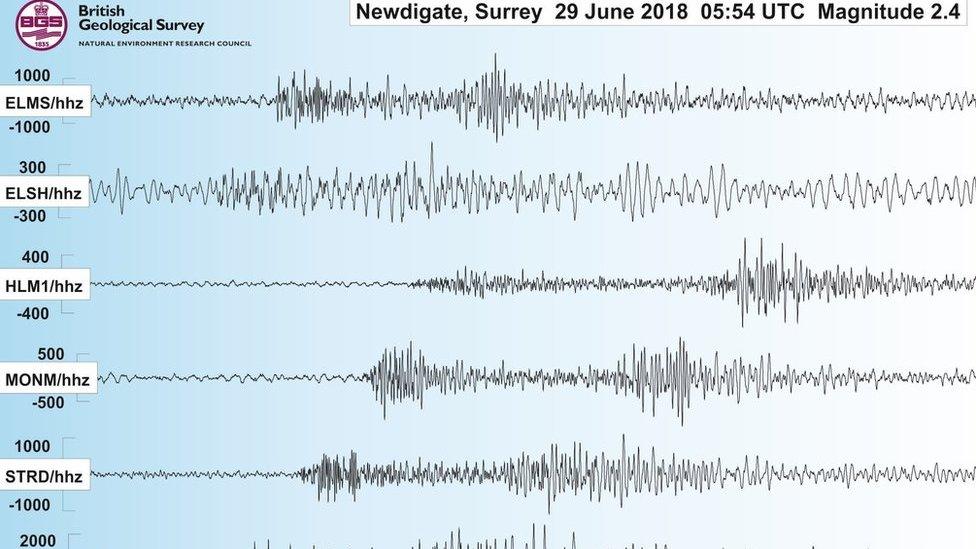
- Published27 June 2018
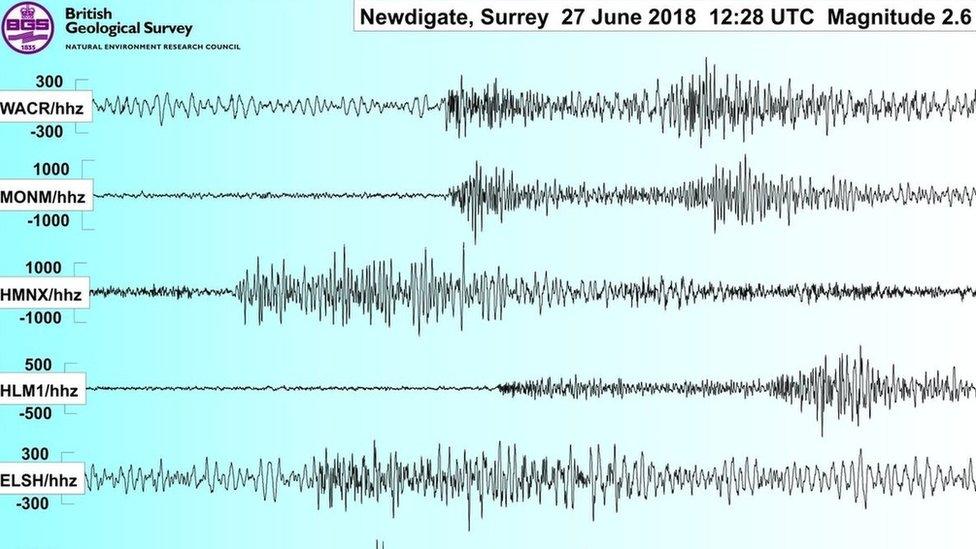
- Published18 April 2016
